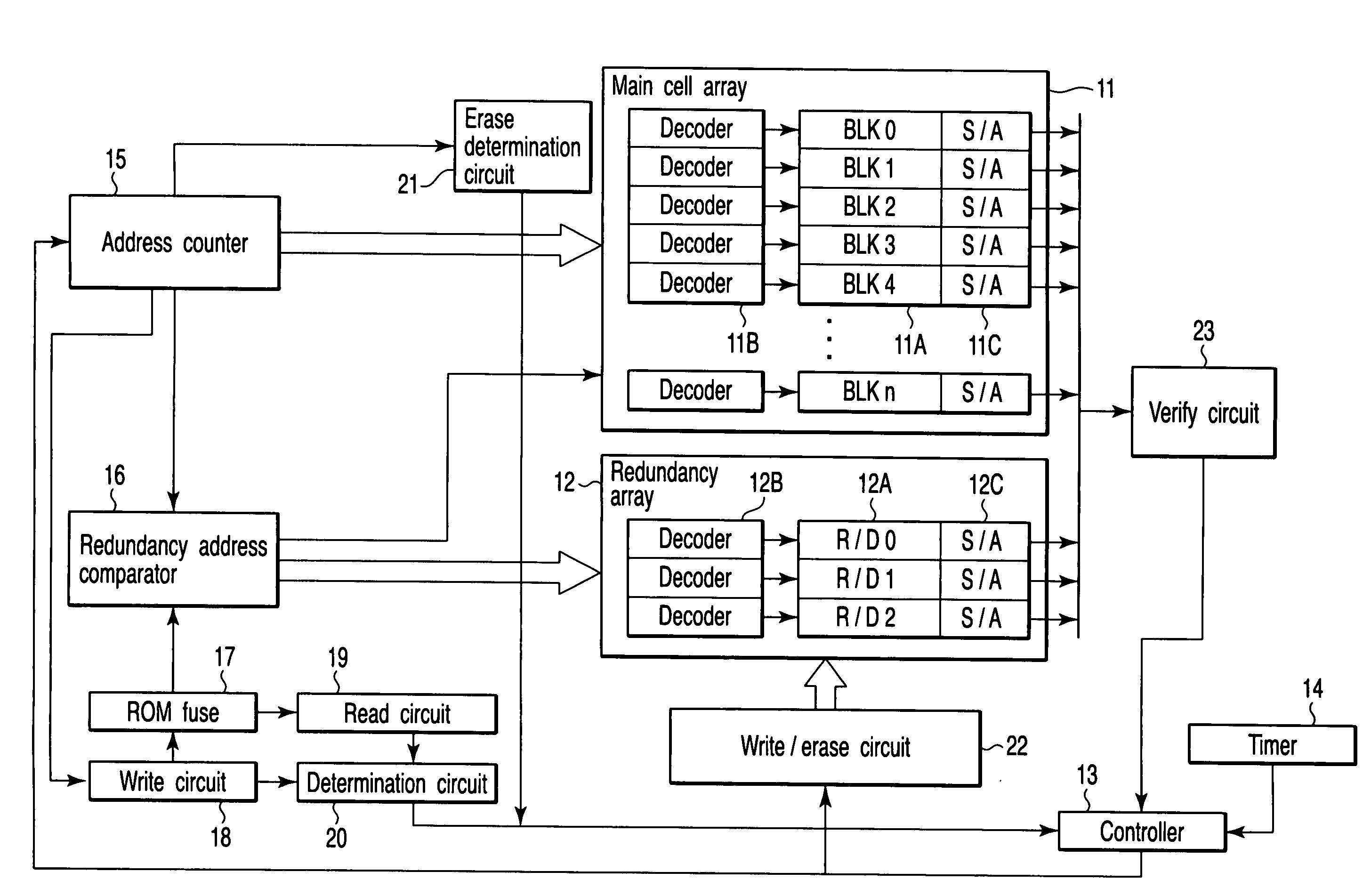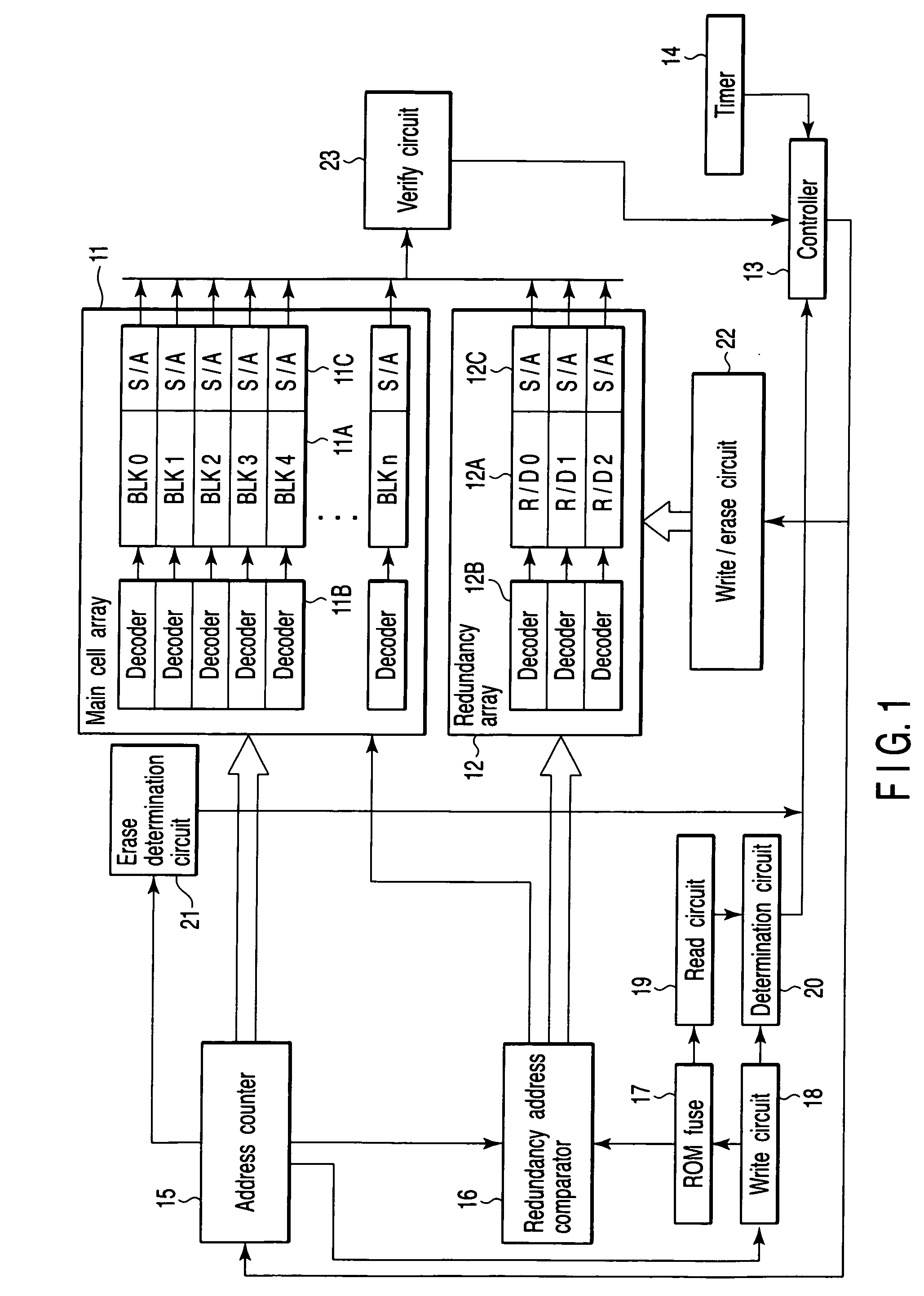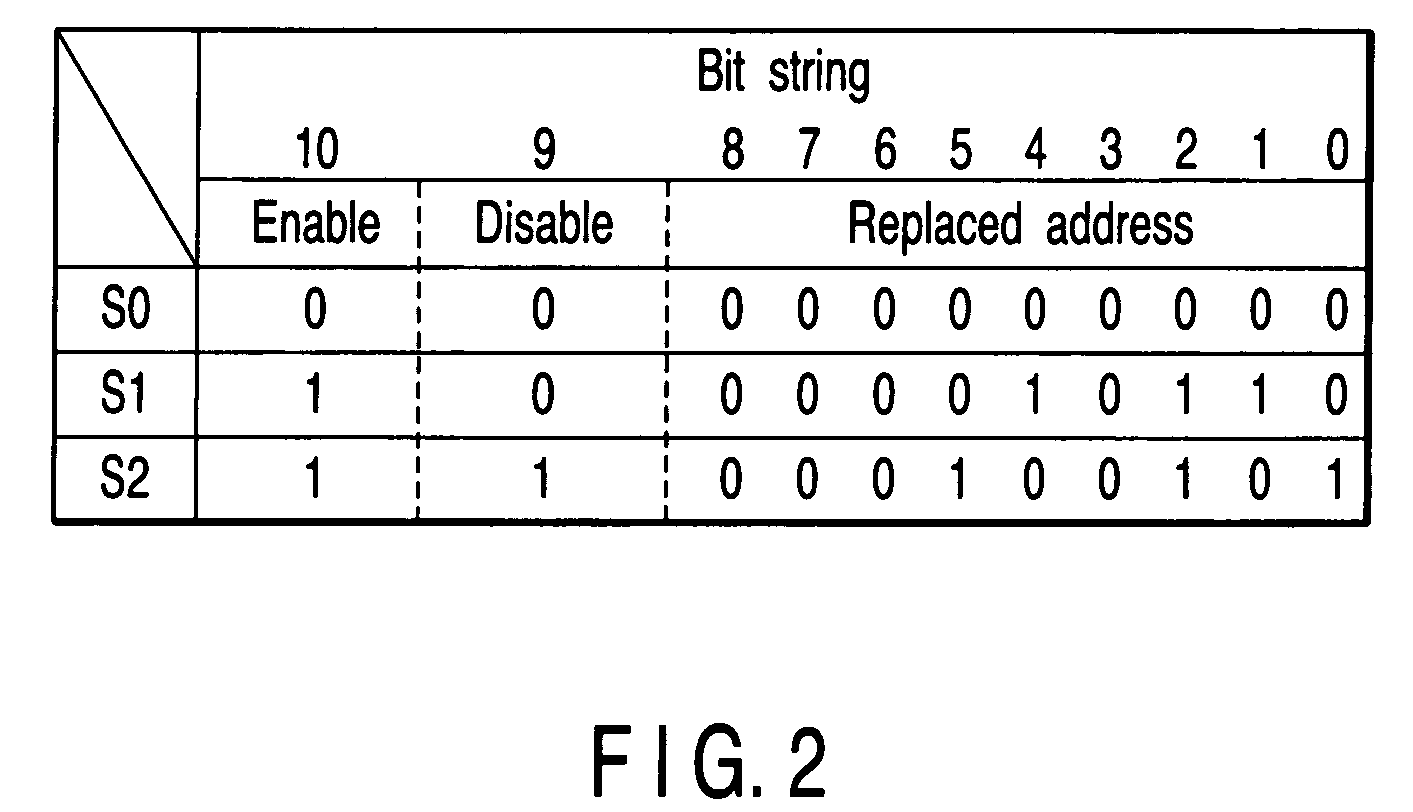Nonvolatile semiconductor memory including redundant cell for replacing defective cell
a technology of semiconductor memory and redundant cells, which is applied in the field of nonvolatile semiconductor memory, can solve the problems of huge test cost, inability to replace defective cells with redundant cells, and inability to meet the requirements of testing,
- Summary
- Abstract
- Description
- Claims
- Application Information
AI Technical Summary
Problems solved by technology
Method used
Image
Examples
first embodiment
[0020] First, a nonvolatile semiconductor memory of the first embodiment of the present invention will be explained below.
[0021]FIG. 1 is a block diagram showing the arrangement of the nonvolatile semiconductor memory of the first embodiment.
[0022] As shown in FIG. 1, this nonvolatile semiconductor memory comprises a memory cell array including a main cell array 11 and redundancy array 12, a controller 13, a timer 14, an address counter 15, a redundancy address comparator 16, a ROM fuse 17, a write circuit 18, a read circuit 19, a determination circuit 20, an erase determination circuit 21, a write / erase circuit 22, and a verify circuit 23.
[0023] In the main cell array 11, a plurality of blocks (BLK0, BLK1, . . . , BLKn) 11A are arranged. A decoder 11B and sense amplifier 11C are connected to each of the blocks (BLK0, BLK1, . . . , BLKn) 11A. Each of the blocks (BLK0, BLK1, . . . , BLKn) 11A includes a plurality of memory cells, and these memory cells in the block are erased at o...
second embodiment
[0055] A nonvolatile semiconductor memory of the second embodiment of the present invention will be described below. The same reference numerals as in the first embodiment denote the same parts to omit an explanation thereof, and only different parts will be explained below. The first embodiment uses the method of searching a plurality of redundant blocks for an unused redundant block. In the second embodiment, a specific redundant block is formed as a block to be exclusively used in an “automatic redundant block replacement routine”.
[0056]FIG. 5 is a block diagram showing the arrangement of the nonvolatile semiconductor memory of the second embodiment.
[0057] In a redundancy array 12, a plurality of redundant blocks (R / D0 and R / D1) 12A and an automatic redundant block (Auto R / D) 12AA are arranged. A decoder 12B and sense amplifier 12C are connected to each of the redundant blocks (R / D0 and R / D1) 12A and automatic redundant block 12AA. Each of the redundant blocks (R / D0 and R / D1) 1...
third embodiment
[0068] A nonvolatile semiconductor memory of the third embodiment of the present invention will be explained below.
[0069] In the first and second embodiments, the automatic redundant block replacement routine starts when two seconds elapse from the start of block erase, and this set time is very long. Accordingly, it takes a very long time to check the operation in the test step. In the third embodiment, therefore, as shown in FIG. 7, in order to reduce the time required to check the operation in the test step, the transition time from the start of block erase to the automatic redundant block replacement routine is set to a few ten μs, e.g., 10 μs (step S41). The rest of the arrangement is the same as in the first and second embodiments.
[0070] The embodiments of the present invention relate to replacement of a redundant cell in a nonvolatile semiconductor memory. If an erase operation currently being executed is not completed within a predetermined time, a block to be erased can b...
PUM
 Login to View More
Login to View More Abstract
Description
Claims
Application Information
 Login to View More
Login to View More - R&D
- Intellectual Property
- Life Sciences
- Materials
- Tech Scout
- Unparalleled Data Quality
- Higher Quality Content
- 60% Fewer Hallucinations
Browse by: Latest US Patents, China's latest patents, Technical Efficacy Thesaurus, Application Domain, Technology Topic, Popular Technical Reports.
© 2025 PatSnap. All rights reserved.Legal|Privacy policy|Modern Slavery Act Transparency Statement|Sitemap|About US| Contact US: help@patsnap.com



